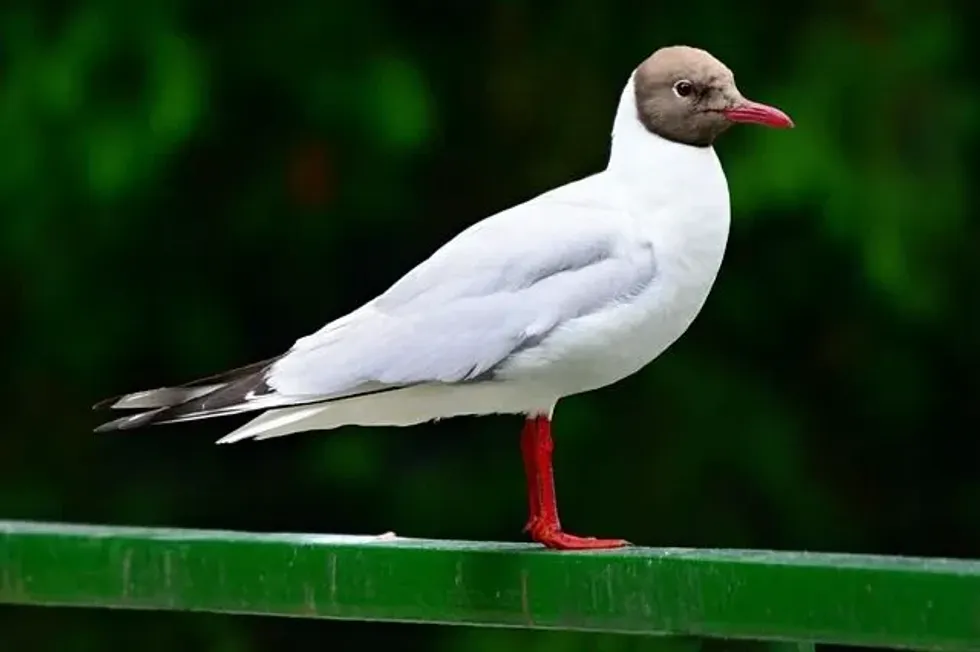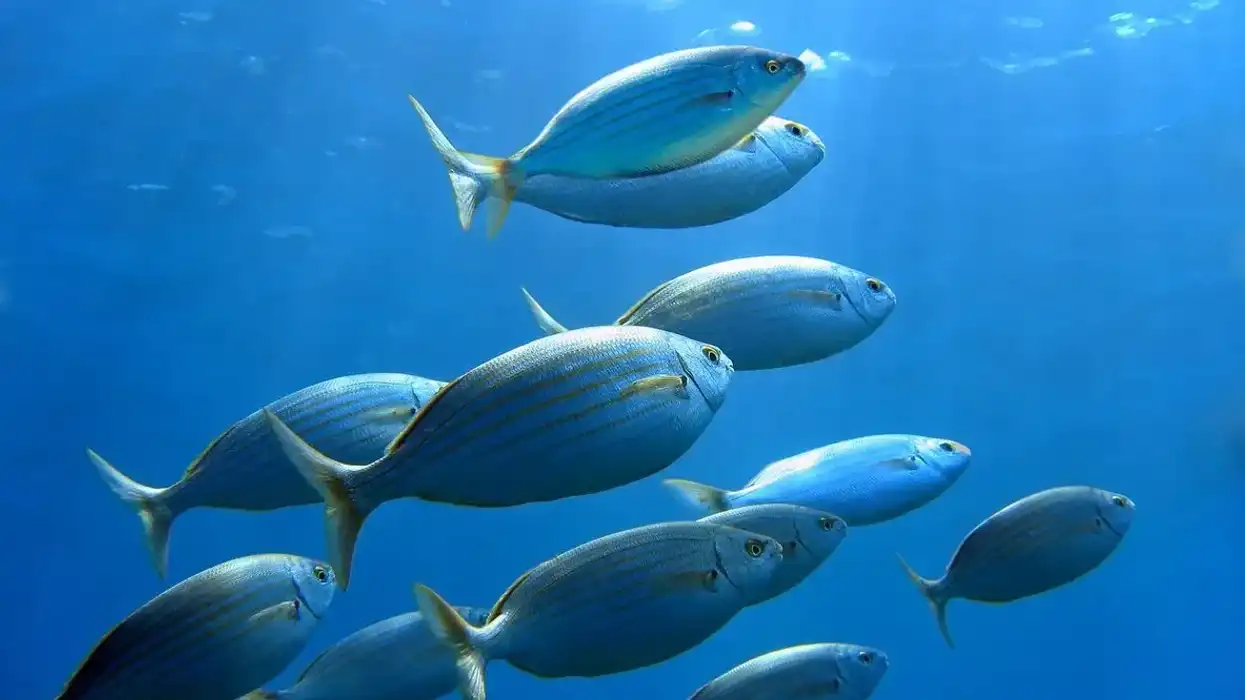The black-headed gull is a small bird and found most abundantly in much of Europe and Asia, and also in Eastern Canada. In recent times, they have also started migrating to other parts of North America.
The birds have different plumage with respect to the season. Although the gull is called a black-headed gull, the color is more chocolate brown than black.
The birds were previously placed in the genus Larus. But it has been changed now to Chroicocephalus. This monotypic species is found widespread.
They are very noisy when in a group and are a very opportunistic feeder. The black-headed gulls are sociable, quarrelsome birds and often gather into larger parties where there are chances of plenty of food, or when they are roosting.
They were quite rare in the early 19th century, but the population showed a steady increase throughout the 20th century to over 100,000 pairs. They are often found along lakes, rivers, bogs, moors, grasslands, swamps, and coastal marshes and near seashores in winters.
These birds are almost of the same sizes as the laughing gull and the yellow-billed cuckoo, for fun facts on them, click on the names to read about them on the Kidadl website.
Black Headed Gull Interesting Facts
What type of animal is a black headed gull?
The black-headed gull is a kind of sea bird.
What class of animal does a black-headed gull belong to?
The black-headed gull, chroicocephalus ridibundus (scientific name), falls under the class Aves of the category of birds.
How many black-headed gulls are there in the world?
The population of black-headed gulls is around 4.8-8.9 million currently.
Where does a black-headed gull live?
They are usually found breeding in lakes, rivers, bogs, moors, grasslands, swamps, and coastal marshes. During winters, however, they migrate and are found primarily along seacoasts, estuaries, and bays.
What is a black-headed gull's habitat?
The black-headed gull is found mostly over Europe in the summer, except Spain and Italy. They are also found in Palearctic to Japan and eastern China.
Even in the Indian subcontinent, they are found during migratory times. In recent times, they have been seen in urban and suburban gardens in London in the winter. They breed in much of Europe, Asia, and coastal eastern Canada.
They often breed in large reed beds or marshes. They may also occur in ponds, canals, and flood lands. In North America, they are the new visitors, first turning up in a small population along the north Atlantic coastline.
It has increased tenfold now. However, in North America, the birds associate with large flocks of Bonaparte's gulls and are not found scavenging for food in gardens and parks.
Who do black-headed gulls live with?
They are found always in flocks and rarely stay alone. During the breeding season, they migrate in much larger groups to different places. They return to their original place in summer.
How long does a black-headed gull live?
The life span of a black-headed gull is around 32 years.
How do they reproduce?
These birds are monogamous breeders. They mate with only one bird for a lifetime.
The mating season starts in March, during which the bird protects their nest vigorously. They often nest in big colonies and use low vegetation areas on the ground to build their nests.
Most commonly the females lay two or three eggs at a time, but there have been many instances of between one and four eggs in one season. The eggs are colored dull green to gray, blotched with brown.
The pairs at the time of breeding incubate the eggs for 22-26 days. The chicks are hatched with eyes open and covered in down. The young are able to stand within a day, but the pairs of parents feed the young for at least a week in the nest and keep them quiet.
After a week, the chicks leave the nest but remain in the same habitat. After around five weeks, they learn to fly and become independent thereafter.
They usually don't leave the habitat and remain with the flock, except during migration. The colonies are usually found in large numbers.
What is their conservation status?
There is no immediate threat to their conservation, although the numbers have decreased in recent times. In migration to North America, the breeding has helped and the numbers have grown tremendously in recent times.
The distribution of the bird all over the world has increased the chances of the survival of the species. The conservation of the bird has taken the right path.
Black Headed Gull Fun Facts
What do black-headed gulls look like?

The black-headed gull has a bright red bill and legs and is easily recognizable. The black-headed gull is smaller than a common gull.
The bird has different identifying features depending on the sex and the season. It basically changed according to the summer plumage, winter plumage, first-winter plumage, and juvenile plumage. Adults have a thick white leading edge to the outer wing, surrounded by a black area.
A long neck, pointed wings, and a small tail are features of these birds. All adults have red legs.
In the summers, during breeding, a dark brown hood appears on the head. In winter, that hood disappears and is replaced by a dark black spot behind the eyes.
The juveniles, young birds just born out of the nest, are patterned on the upper parts in ginger and brown. The juvenile birds also have a black tail. The first winter and first summer plumage birds have the same wings and tails as that of the young ones but show gray on the mantle.
In the first summer, the hood has a mixture of white and brown on the head. Juveniles get the adult colors after a couple of years.
How cute are they?
The bird is found to be quite cute with a vibrant look in different seasons of the year.
How do they communicate?
The family of the black-headed gull has a strident, slurred high pitched voice. They use this to communicate with each other. When all the distribution of the birds come together at the colonies, these calls can be very noisy.
How big is a black-headed gull?
An adult black-headed gull is 15–17 in (38–44 cm) in length and their wingspan is 37–41 in (94–105 cm). The size of the bird is considered to be the smallest among the family of gulls.
The biggest gull, the great black-backed gull is considerably larger with an adult bird's length of 31.1 in, almost double the size of the black-headed gull.
How fast can a black-headed gull fly?
An adult black-headed gull can both soar and glide in the sky and is a very active and quick flyer. Although there is no mention of the exact speed of this bird anywhere.
How much does a black-headed gull weigh?
The weight of the black-headed gull ranges from 0.6-0.7 lb (270-330 g).
What are their male and female names of the species?
They are known by the same scientific name, Chroicocephalus ridibundus, but do not have separate names for the sex of the species.
What would you call a baby black-headed gull?
They are known as chicks commonly. The young offspring are also called juveniles.
What do they eat?
They mostly live in the wild in the summer in their natural habitats and feed on insects, plants, earthworms, and fish from the water bodies. When they migrate, they often create havoc in parks and gardens by plunging onto leftover foods thrown by people. In North America, they don't enter gardens and parks.
Are they dangerous?
They are not dangerous.
Would they make a good pet?
They only flourish in their natural habitats. They won't be able to be domesticated as they are made for the wild.
Did you know...
Black-headed gulls are also known by their scientific name, Chroicocephalus ridibundus, which means laughing gull.
Is a black-headed gull a seagull?
It is most definitely not a seagull as they are commonly found almost anywhere inland. That is not the case with seagulls. Seagulls are only found along coastal areas.
Are black-headed gulls protected?
In the UK, black-headed gulls are protected by The Wildlife and Countryside Act 1981, and the status has been put on Amber.
They are protected by the Wildlife of Northern Ireland Order 1985 in Scotland and Northern Ireland, where it is illegal to recklessly or intentionally injure or kill the bird or damage or destroy an active nest and its contents.
Here at Kidadl, we have carefully created lots of interesting family-friendly animal facts for everyone to discover! Learn more about some other birds including the puffin and the frigatebird.
You can even occupy yourself at home by drawing one of our flying seagulls coloring pages.










